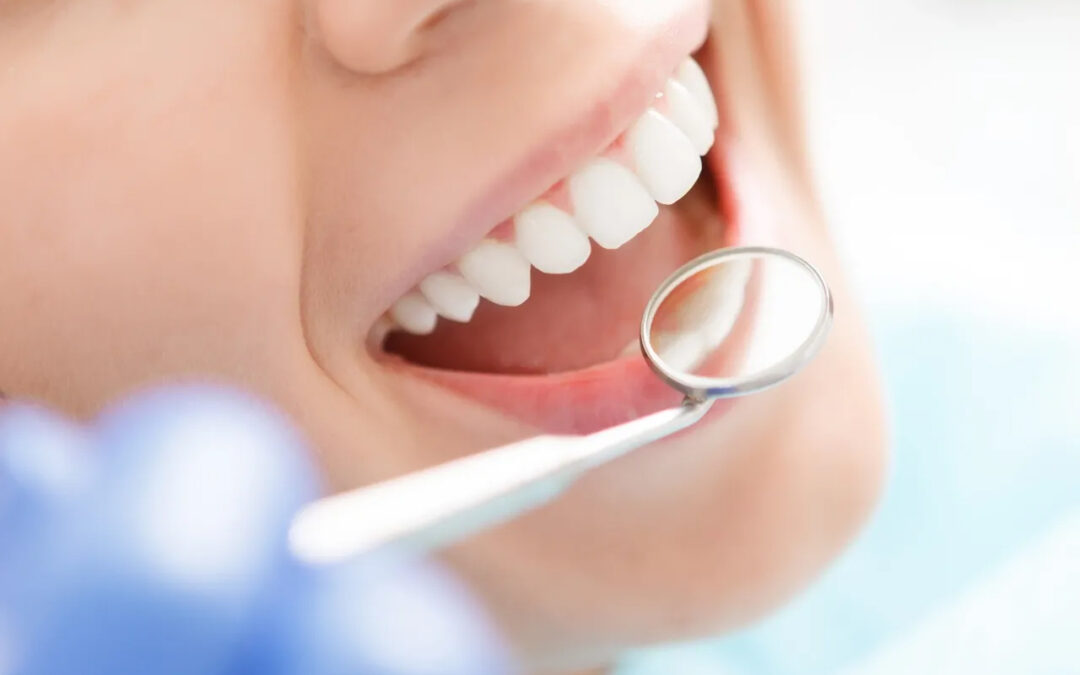[vc_row][vc_column][vc_column_text][/vc_column_text][vc_column_text]Gum disease is also known as periodontal disease, and it is primarily caused by plaque, which is the sticky substance we can easily scratch off from the surface of our teeth when we do not brush. Gum disease is a major cause of tooth loss in adults and the elderly population.
Learn more about Proper Brushing and Flossing of Teeth for Optimum Dental Health
In the initial stage of formation, plaque is a biofilm, made up of bacteria, water and complex proteins. If not brushed or flossed away, plaque hardens into tartar, a pale yellowish- brownish deposit (mostly found behind the lower front teeth).
It is well known that bacteria causes inflammation in our body. So also, bacteria in dental plaque causes gum disease, because it causes an inflammation of the surrounding gum tissues, including the gums, bone and the attachment of teeth to bone (called periodontal ligaments). When gum disease infects the gums, bone and attachment of teeth to bone, it can also infect the tooth in a retrograde (perioendo lesion) manner, and will need to be treated with a deep cleaning procedure and also, a root canal treatment.
Learn more about root canal treatment
Gum disease usually occurs over a period of time even decades (chronic type). Since gum disease is not painful, a lot of adults do not know they have it, and do not seek for treatment, until it is too late.
Signs of gum disease
- gums that bleed when you brush
- red, swollen, painful gums
- teeth that appear longer than usual, because the gums have pulled away from it
- bad breath or bad taste that persists
- changes in the way your teeth fit together when you clench or bite
- change in the fit of partial dentures
Factors that increase the risk of gum disease
- not brushing and flossing regularly
- using tobacco products: smoking or chewing
- genetics
- crooked teeth that are overlapping and hard to keep clean
- pregnancy
- pregnancy
- medications, including steroids, certain types of anti-epilepsy drugs, cancer therapy drugs, some calcium channel blockers and oral contraceptives.
Stages of gum disease
Gingivitis: This is the early stage of gum disease, when only your gums are inflammed, and appear red, swollen and easily bruise (especially when your brush). At this stage, the disease is still reversible. See treatment below
Periodontitis: Periodontitis is inflammation of the bone and its attachment. When bone is inflammed, it undergoes resorbtion, or it simply “goes away”, compromising support for the teeth. It can be so severe that you will feel your teeth are loose, and moving when you try to move it. The chronic type of periodontitis occurs over time, and it is very common in the adult and elderly population. The aggressive type is very destructive and occurs in the younger population, and can cause rapid tooth loss.
Some studies indicate that severe gum disease may be associated with several other health conditions such as diabetes or stroke, but no conclusive association has been published.
How is gum disease treated?
Your dentist will treat your gum disease, depending on the stage.
Gingivitis: This is usually treated on a single visit with regular cleaning. You then have to keep up with good oral hygiene of brushing and flossing.
Periodontitis: May be treated in multiple appointments, with “maintenance” follow-ups. X-rays help to diagnose what disease stage you are at, and the amount and locations of tartar to be removed. Your dentist will also do a probing check to see how much bone and attachment you have lost. The periodontal probing may be slightly uncomfortable, but it needs to be gently carried out. After this is completed, the dentist draws an action plan to determine your frequency of visit for recall and maintenance appointments.
According to American Dental Association, “It is possible to have gum disease and have no warning signs. That is one reason why regular dental checkups and periodontal examinations are very important. Treatment methods depend upon the type of disease and how far the condition has progressed. Good dental care at home is essential to help keep periodontal disease from becoming more serious or recurring. Remember: You don’t have to lose teeth to gum disease. Brush your teeth twice a day, clean between your teeth daily, eat a balanced -diet, and schedule regular dental visits for a lifetime of healthy smiles”.-
Schedule your appointment today for a free consultation and detailed plan o action to treat Gum disease. Call 815-782-6243. Visit us at smileleaguedental.com for more details[/vc_column_text][/vc_column][/vc_row]


Recent Comments